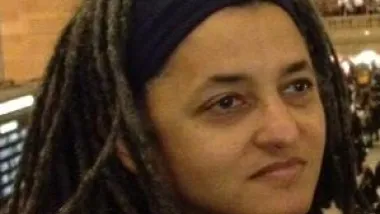Returning to San Francisco from a trip to New York City, I ruminated on my first experience of staying in midtown in the city in which I was raised. The city is different, of course. Times Square has fulfilled its Blade Runner destiny, and blue Grecian “Greatest Coffee in the World” cups have been supplanted with those from Starbucks. What stayed with me, however, was a brief exchange with another attendee of the same conference for which I was in town. “Everything is so expensive” she lamented. “I see people with yogurts and sandwiches and other things that don’t seem to cost too much, but I don’t know where they get them.” “Oh, there’s plenty of stuff around here” I replied. “You just have to look.”
Returning to San Francisco from a trip to New York City, I
ruminated on my first experience of staying in midtown in the city in which I
was raised. The city is different, of course. Times Square has fulfilled its Blade
Runner destiny, and blue Grecian "Greatest Coffee in the World" cups have
been supplanted with those from Starbucks. What stayed with me, however, was a
brief exchange with another attendee of the same conference for which I was in
town. "Everything is so expensive" she lamented. "I see people with yogurts and
sandwiches and other things that don't seem to cost too much, but I don't know
where they get them." "Oh, there's plenty of stuff around here" I replied. "You
just have to look."
It was true. There was plenty. And because the landscape was
legible to me, I knew how and where to find it. Earlier that day I had gone
across the street to the Halal cart and gotten a fantastic falafel sandwich and
a beverage for under $5. I knew to go to
that stand, and not its rival across the street, because it had a long line of
people who were waiting patiently for items from their brief menu of beef,
falafel, and hummus. In the same block, but set back from the street, was a
small deli where one could get fresh sandwiches, salads, and snacks. A couple
of blocks away was what New Yorkers call a "Korean Deli". These ubiquitous
markets are run by Korean families, open 24 hours a day, and offer gigantic
salad bars, sushi, fruit, vegetables, and packaged ready-to-eat foods, among
other things. A block further and there
was a supermarket (New York-sized; compact and crowded, no sprawling aisles or
even parking). And the "drug stores" on every block might still have
pharmacies, but they are well hidden today behind the refrigerated dairy cases,
the fresh produce, and the aisles of canned and boxed foods.
I was surprised, at first, that this conferee hadn't checked
out the Halal food stand across the street. But of course, street food isn't
part of the American landscape, and probably looks untrustworthy and unsavory
to visitors who are seeking nourishment rather than a "New York experience".
And without knowing what to look for, the deli across the street probably
didn't look accessible.
I've encountered the same illegibility when visiting other
cities. If I'm not seeking a familiar chain, how do I find food? How do I know
where to go, what to purchase, and how it is consumed locally? How do I order
from the menu of a cuisine I've never encountered? How do I make this food
landscape legible?
Taken a step further, how does someone in a neighborhood
without supermarkets learn how to prepare fresh food? How does the newcomer
learn to understand the produce of another culture, if that is what is
available to them?
What food landscapes have you found legible and illegible?

Planetizen Federal Action Tracker
A weekly monitor of how Trump’s orders and actions are impacting planners and planning in America.

Chicago’s Ghost Rails
Just beneath the surface of the modern city lie the remnants of its expansive early 20th-century streetcar system.

Amtrak Cutting Jobs, Funding to High-Speed Rail
The agency plans to cut 10 percent of its workforce and has confirmed it will not fund new high-speed rail projects.

Ohio Forces Data Centers to Prepay for Power
Utilities are calling on states to hold data center operators responsible for new energy demands to prevent leaving consumers on the hook for their bills.

MARTA CEO Steps Down Amid Citizenship Concerns
MARTA’s board announced Thursday that its chief, who is from Canada, is resigning due to questions about his immigration status.

Silicon Valley ‘Bike Superhighway’ Awarded $14M State Grant
A Caltrans grant brings the 10-mile Central Bikeway project connecting Santa Clara and East San Jose closer to fruition.
Urban Design for Planners 1: Software Tools
This six-course series explores essential urban design concepts using open source software and equips planners with the tools they need to participate fully in the urban design process.
Planning for Universal Design
Learn the tools for implementing Universal Design in planning regulations.
Caltrans
City of Fort Worth
Mpact (founded as Rail~Volution)
City of Camden Redevelopment Agency
City of Astoria
City of Portland
City of Laramie






























